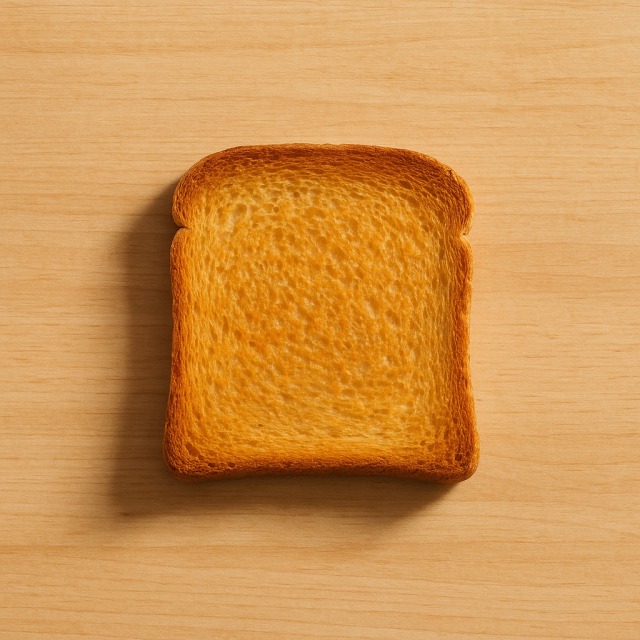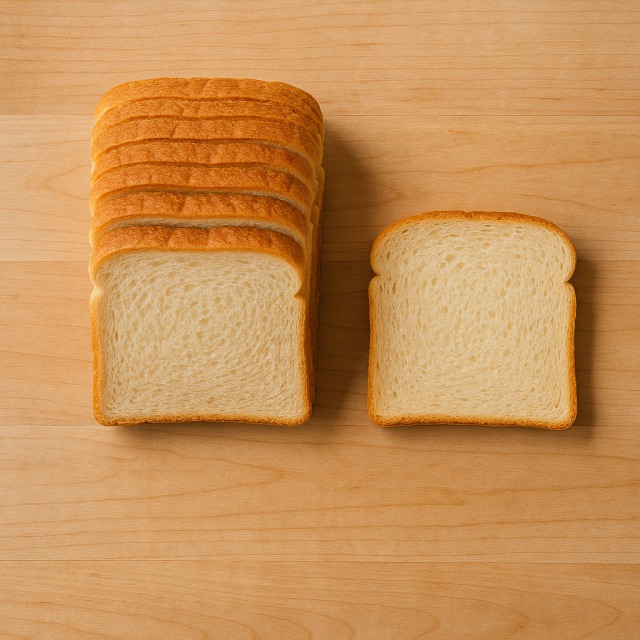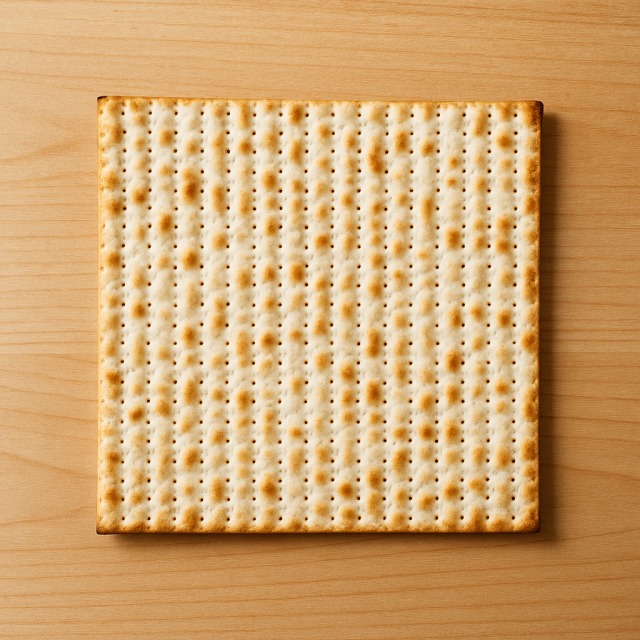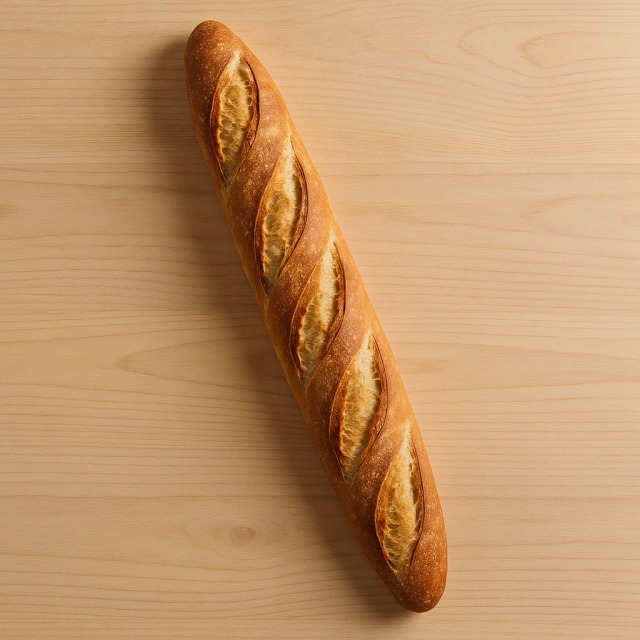Calorie Chart / Trimmings / Bread - Wholemeal
How Many Calories Are in Wholemeal bread?
Calculation of the nutritional value & Recommended Dietary Intake of wholemeal bread
For g and a calorie requirement of kcal
| Calories 98 kcal | Proteins 3.6 g | Lipids 0.7 g | Carbohydrates 19 g |
| 5% | 5% | 1% | 7% |
Health benefits of wholemeal bread
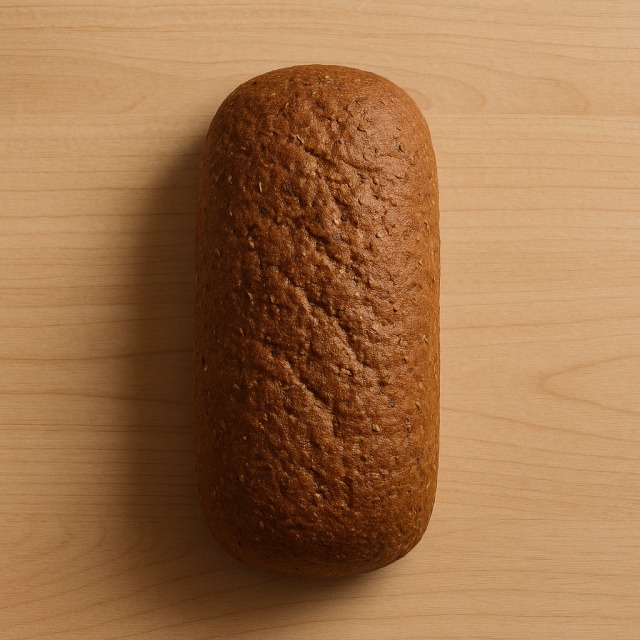
Wholemeal bread - 100g
Calories 246 kcal
Proteins 9 g
Lipids 1.8 g
Carbohydrates 48.5 g
Wholemeal bread is considered a moderate-calorie option: it supplies enough energy to fuel daily activities without reaching the high-calorie density of pastries or fried snacks. Those calories come mainly from complex carbohydrates that release energy gradually, which helps avoid sudden blood-sugar spikes. Mentioning calories repeatedly underlines why many weight-conscious people choose this bread instead of refined alternatives.
Beyond calories, wholemeal bread retains the bran and germ of the grain, providing notable amounts of B-group vitamins (especially B1 and B3) that support normal energy metabolism. It also contributes minerals such as magnesium, iron, and manganese, and delivers about 6 g of fibre per 50 g slice, helpful for satiety and digestive comfort—an indirect aid to managing daily calories. Its moderate protein content (9 g/100 g) makes the calories more satisfying than those in white bread.
Thanks to the intact grain, wholemeal bread contains antioxidants like ferulic acid and phytosterols, whose supposed role in cardiovascular protection is still being studied (hence "supposed"). Historically, breads made with wholemeal flour sustained rural populations because the higher nutrient density justified the calories invested in milling and baking. Those calories remained valuable as people's main portable energy source before modern snacks existed.
Tips for incorporating wholemeal bread into a balanced diet
To keep total daily calories in check, pair one or two slices of wholemeal bread with lean protein and bulky vegetables. For a balanced breakfast, top toasted bread with scrambled egg whites and a few slices of avocado; the healthy fats make calories more filling. At lunch, a sandwich using grilled chicken breast, lettuce, and tomato keeps calories moderate while boosting proteins.
If you crave something sweet, spread a thin layer of 100% fruit compote or a teaspoon of almond butter instead of sugary spreads; this swap reduces empty calories. Wholemeal croutons baked with a drizzle of olive oil bring texture to soups such as pumpkin velouté—an easy way to stretch calories over a larger, fibre-rich volume.
For athletes needing more calories, turn wholemeal bread into French-toast-style slices soaked in semi-skimmed milk and topped with banana and a spoonful of honey. Conversely, if the goal is weight loss, replace a starchy dinner side like French fries with a small slice of wholemeal bread plus steamed broccoli; you still satisfy bread cravings while cutting hundreds of calories. Remember: portion size matters more than the bread itself—track calories to stay within your target.
Frequently Asked Questions
- How many calories are in wholemeal bread?
- There are 246 kcal per 100 g, a useful reference when you log your calories.
- Is wholemeal bread lower in calories than white bread?
- Wholemeal and white breads often carry similar calories per 100 g, but the fibre in wholemeal bread makes those calories more satiating.
- Can wholemeal bread help me control my daily calories?
- Yes, its fibre and slower digestion can curb hunger, making it easier to limit total calories.
- How many calories are in a standard slice of wholemeal bread?
- A 40 g slice provides roughly 100 calories; weigh your slice to refine calorie counting.
- Does toasting change the calories of wholemeal bread?
- No, toasting only removes moisture; the calories remain virtually identical.
- Are the calories from wholemeal bread suitable for athletes?
- Absolutely—paired with protein, these calories supply sustained energy for training and recovery.
Similar foods
Information provided by Calorie Menu may contain inaccuracies or errors. It cannot, under any circumstances, substitute medical advice or medication.
